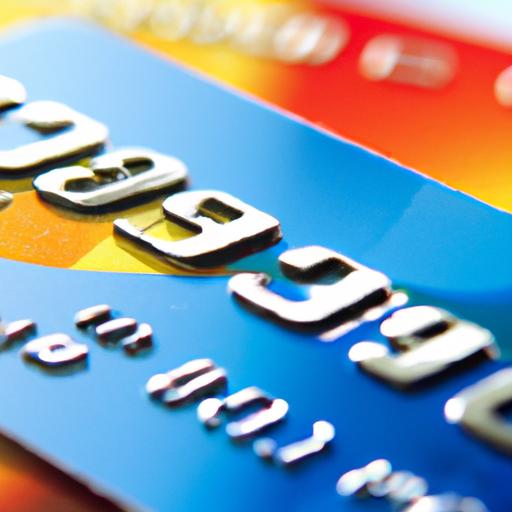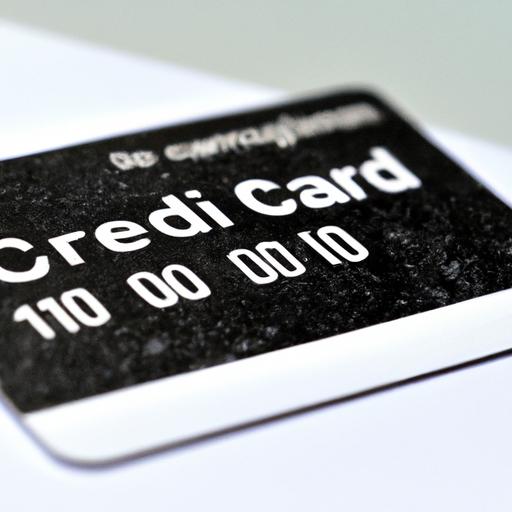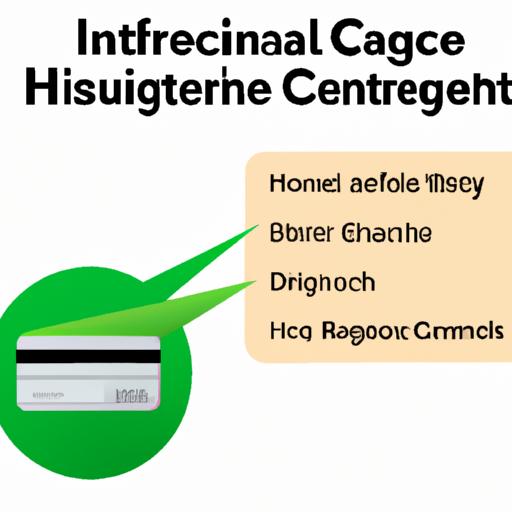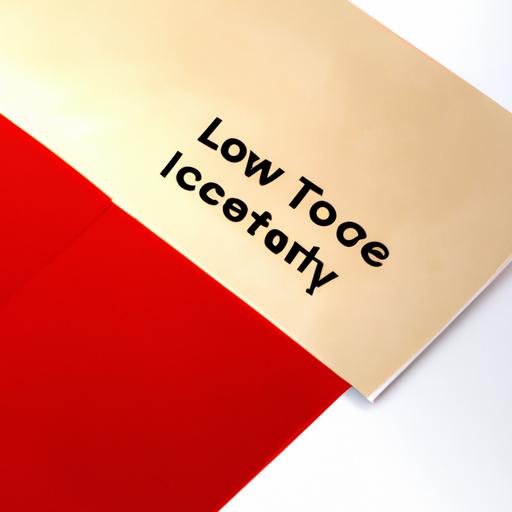Credit Card Interest Rates Explained: How to Avoid High Charges
Are you ready to decode the mysterious world of credit card interest rates? Grab your wildest curiosity, because in this article, we’re about to embark on a thrilling journey through the concrete jungle of financial terms and discover the secrets to avoiding those pesky charges that seem to multiply faster than rabbits on a sugar high. So, fasten your seatbelts, dear readers, as we dive headfirst into the abyss of credit card interest rates, armed with our casual and creative attitude!
Credit Card Interest Rates: The Basics You Need to Know
Credit card interest rates can be confusing, but understanding the basics is essential to avoid high charges. When you make a purchase using your credit card and carry a balance from month to month, you will be charged interest. This interest is calculated based on your annual percentage rate (APR), which is the cost of borrowing money expressed as a yearly interest rate. The higher the APR, the more you’ll pay in interest charges. It’s crucial to compare credit card offers and choose one with a lower APR to minimize the amount of interest you’ll owe over time.
Another important factor to consider is the different types of interest rates that credit cards may offer. Some credit cards have a variable APR, which means the rate can change over time based on market conditions. On the other hand, some cards offer a promotional APR for a specified period, typically lower than the regular rate. You need to be aware of these details to make informed decisions about your credit card usage.
- Always pay your credit card balance in full each month to avoid interest charges.
- If you can’t pay off the entire balance, try to make more than the minimum payment to reduce interest costs.
- Consider transferring your balance to a credit card with a lower APR, especially if you’re carrying a high balance.
| Type of Interest Rate | Description |
|---|---|
| Variable APR | The interest rate that can fluctuate based on market conditions |
| Promotional APR | A temporary, lower interest rate offered for a specific time period |
| Standard APR | The regular interest rate applied to your balance after any promotional period ends |
Demystifying High Charges: Understanding Credit Card Interest Rates
Picture this: you’ve just received your credit card bill and the interest charges are through the roof. Panic sets in, and you start to wonder how it got so high in the first place. Understanding credit card interest rates can be a bewildering task, but fear not, because we’re here to demystify the whole process for you.
First things first, let’s break it down into bite-sized pieces. Credit card interest rates, often presented as an annual percentage rate (APR), are the fees you have to pay for borrowing money on your card. These rates can vary depending on the type of credit card you have and your creditworthiness. To avoid high charges, it’s crucial to grasp the ins and outs of interest rates attached to different aspects of your card usage.
The 4 Key Components of Credit Card Interest Rates:
- Purchase APR: This is the interest applicable to any purchases made on your card. If you carry a balance on these purchases, interest will accrue.
- Cash Advance APR: Need some quick cash? Watch out for this rate, as it applies to cash withdrawals made with your credit card.
- Balance Transfer APR: If you decide to transfer your existing credit card debt onto a new card, this interest rate is what you’ll be dealing with.
- Penalty APR: Late payments and other infringements can trigger this higher interest rate, so it’s essential to always pay on time!
Now that you have a clearer understanding of the different types of credit card interest rates, it’s time to explore how to avoid those pesky high charges. One of the simplest ways to steer clear of excessive interest fees is to pay your balance in full and on time each month. By doing so, you won’t have to worry about accruing any interest whatsoever. However, if you find yourself unable to pay the full balance, even making the minimum payment on time can go a long way in avoiding those extra charges.
Smart Strategies to Avoid High Credit Card Interest Charges
Credit card interest rates can often be a major drain on your financial resources if you’re not careful. To help you avoid high charges and keep more money in your pocket, here are some smart strategies to consider:
1. Pay your balance in full and on time: This is the most effective way to avoid credit card interest charges altogether. By paying your balance in full each month by the due date, you won’t give the interest a chance to accrue. Set up automatic payments or reminders to ensure you never miss a payment.
2. Look for low-interest or 0% APR introductory offers: Some credit cards offer promotional periods where you won’t be charged any interest for a certain period of time, typically 6 to 12 months. Take advantage of these offers by transferring your existing balances to a card with a lower interest rate or by making new purchases without accruing interest.
| APR | Annual Fee | |
|---|---|---|
| Card A | 12% | $0 |
| Card B | 18% | $50 |
| Card C | 0% (for first 12 months) | $0 |
By using these smart strategies, you can take control of your credit card interest charges and save yourself a significant amount of money in the long run. Remember, the key is to be proactive and make wise financial choices that align with your goals and lifestyle.
Secrets to Lowering Credit Card Interest Rates
If you find yourself crushed under the weight of exorbitant credit card interest rates, don’t fret! There are savvy strategies you can implement to alleviate the burden of high charges and take control of your finances. Let’s explore some lesser-known secrets that could save you a fortune in interest payments!
1. Carve Out a Payment Plan: Assess your current financial situation and determine how much you can allocate towards paying off your credit card debt each month. By consistently making more than just the minimum payment, you can chip away at the principal balance quicker, reducing the amount of interest charged.
2. Shop Around for Lower Rates: Don’t settle for high-interest credit cards. It’s time to hit the market! Research and compare different credit card providers, looking for low-interest or even 0% introductory APR offers. Be aware of any transfer fees, and if you do opt for a new card, transfer your balance strategically to minimize costs.
| Credit Card Provider | Interest Rate |
|---|---|
| Awesome Bank | 15% |
| Smart Finance | 12% |
| EconoCard | 8% |
Remember, reducing your credit card interest rate can be a game-changer. Tackling high charges by implementing these secrets of credit card wizardry will put you on the path toward a healthier and more prosperous financial future!
The Conclusion
And there you have it, folks! We’ve demystified the perplexing world of credit card interest rates, showing you how to dodge those treacherous high charges. Remember, it’s all about being street-smart and staying savvy with your plastic companions.
Now, armed with this newfound knowledge, go forth and conquer the land of credit cards like a boss. Take control of your financial destiny and never let those sneaky interest rates catch you off guard again! Don’t let them lurk in the shadows, ready to pounce on your hard-earned dollars.
Instead, opt for the wise path of prudence and responsibility. Pay your bills on time, in full, and put an end to that interest monster once and for all. Believe us, your future self will thank you with a standing ovation and perhaps even a round of applause.
So, my friends, remember these pearls of wisdom we’ve shared today. Avoid high interest charges like you would a bad date or a crazy ex—swiftly and decisively. Stay vigilant, read the fine print, and never be afraid to negotiate for better deals. With a little know-how, you can outsmart those pesky interest rates and carve your own credit card success story.
On that note, it’s time to bid you farewell. May your credit journeys be filled with low charges, enviable rewards, and financial bliss. Until we meet again, keep those credit cards in your wallet and your bank account happy. Cheers to a future free from the clutches of high interest rates!






